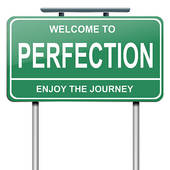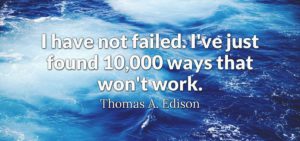Exploring Your Internal Map Of Reality Part 9: Perfection Is Only A Direction
 Perfection… What is it?
Perfection… What is it?
This series about the Internal Map Of Reality has been quite an adventure. Some of our topics have been about the components of the Map of Reality, such as Values, Beliefs, Modalities and Submodalities.
Other topics have covered techniques such as chunking.
And most recently we discussed metaprograms and strategies, which are ways of building the components into processes that we can broadly call ‘thinking’.
This article is a sort of refreshment to the hard information covered previously.
 It can safely be presumed that everyone in the world has goals – things they want in life. Indeed, a lot of personal development courses and seminars devote much time on how to set goals and how to achieve them.
It can safely be presumed that everyone in the world has goals – things they want in life. Indeed, a lot of personal development courses and seminars devote much time on how to set goals and how to achieve them.
It’s also a given that many people either do not have a coherent goal they want, they do not know how to achieve their goals, or never actually succeed at any goal they set.
This deficiency is largely due to 1) not being familiar with the components of the Internal Map of Reality, and 2) using faulty strategies to achieve their goals.
In any goal achievement process (a.k.a. a strategy) there must be
- A specific, desired outcome (this can be found using techniques such as the S.M.A.R.T. goal system)
- Knowledge of the starting point
- Some kind of action taken towards that goal
- Checking the results of that action
- Modifying your actions to get a better result, and
- Repeating steps 3 to 5 until the desired result is achieved.
If you downloaded my Free Report you will find more information on this process.
I want to address point 4 – checking your results – in more detail today.
Many goals can also be said to be ‘ideals’. That is, they represent a perfect situation or outcome.
However, that’s the problem with such goals – they are not specific or measurable in any way.
They only indicate the direction to travel, not the destination.
 When someone says, ‘I want to be happy,’ I immediately become sceptical. ‘What is happiness?’ I would say. Happiness is an internal state, not a goal. Then I would ask: ‘What makes you happy?’ Again, people are seeking Perfection without knowing what leads to it.
When someone says, ‘I want to be happy,’ I immediately become sceptical. ‘What is happiness?’ I would say. Happiness is an internal state, not a goal. Then I would ask: ‘What makes you happy?’ Again, people are seeking Perfection without knowing what leads to it.
Once you have the answer to this (and there might be many things that make someone happy) you could probably work out a strategy for happiness.
 Earl Nightingale once said: ‘Success is the progressive realisation of a worthy goal or ideal’
Earl Nightingale once said: ‘Success is the progressive realisation of a worthy goal or ideal’
The key here is to be able to distinguish between a specific goal and an ideal.
At step 4 of the process above, you check the results of any actions you have taken: how close are you to achieving your goal – or have you gone backwards? Forwards might mean success for most people, but did you know that backwards also means success? If you went backwards then you found out what didn’t work.
 As Thomas Edison once said: “I have not failed. I’ve just found 10,000 ways that won’t work.”
As Thomas Edison once said: “I have not failed. I’ve just found 10,000 ways that won’t work.”
So understanding what success is, is one step towards achieving it.
Another important aspect is to be able to recognise your progress.
Many people will see failure as the end of their goal strategy and a lack of perfection. This is usually brought about by their limiting beliefs about success.
On the other hand, as with Edison and Nightingale above, others have empowering beliefs about success that keep them working towards their goal’s achievement.
Another thing that prevents people recognising success is the direction that they look to.
 Successful people use an ideal as a direction, not a destination. They evaluate progress based on how far they’ve gone, not on how far they have to go.
Successful people use an ideal as a direction, not a destination. They evaluate progress based on how far they’ve gone, not on how far they have to go.
Unsuccessful people always look forward to the ideal but never see how far they’ve come.
It’s like chasing the end of the rainbow or trying to get to the horizon. No matter how far you travel, the horizon is always ‘at the horizon’.
Only successful people understand that it’s an ideal – a direction, not a goal… Perfection is only a direction!
